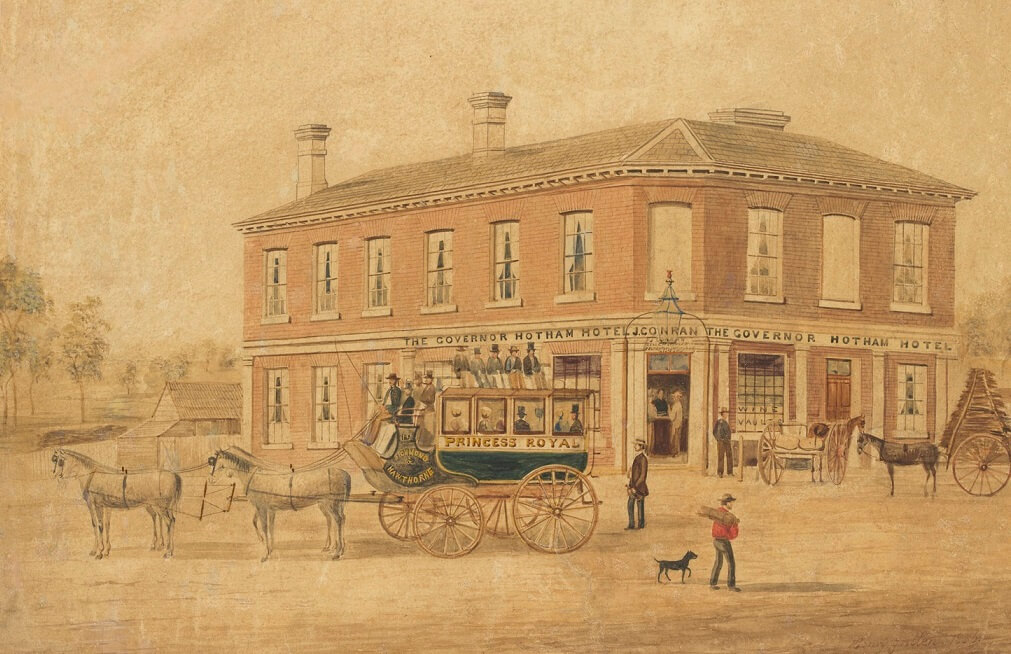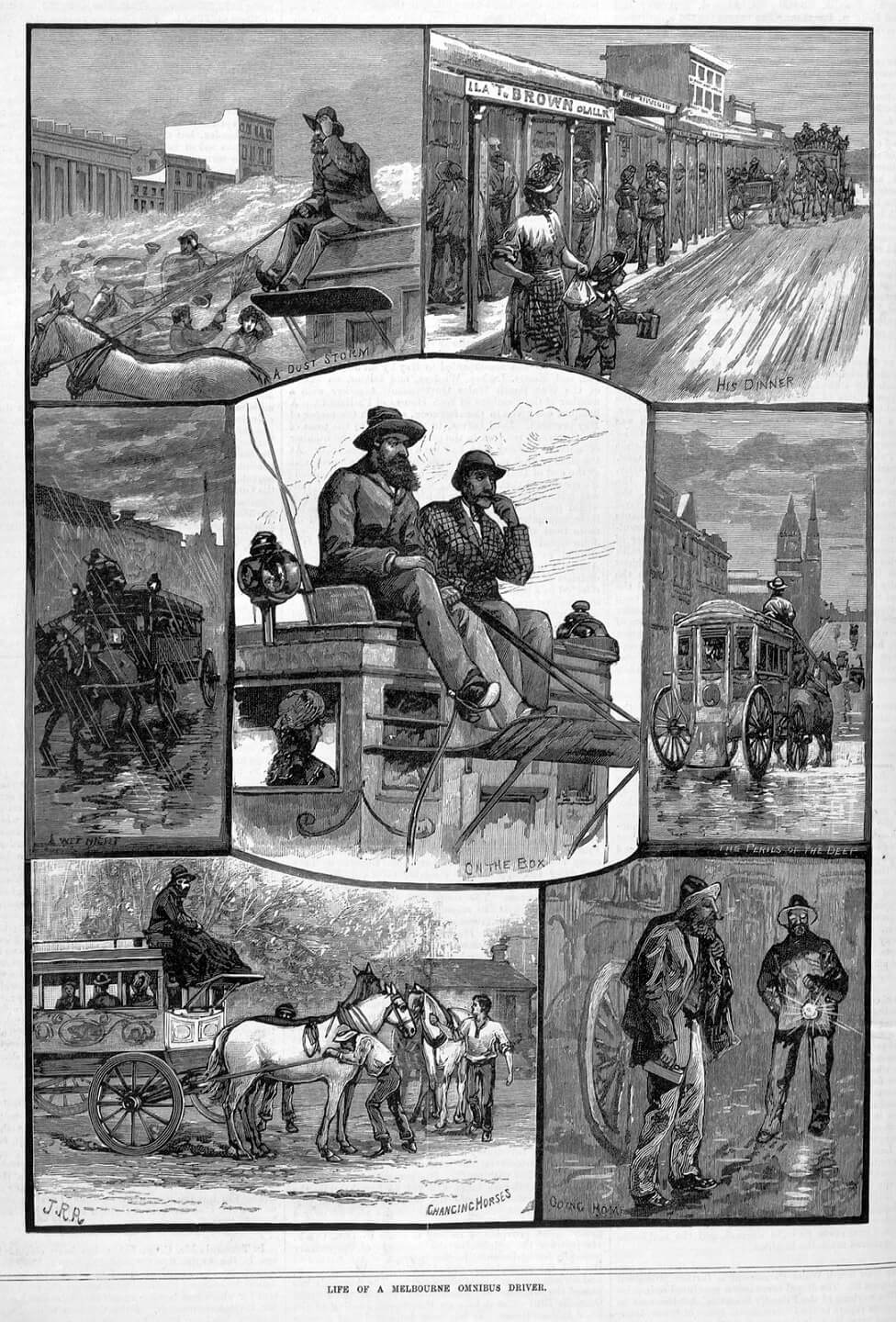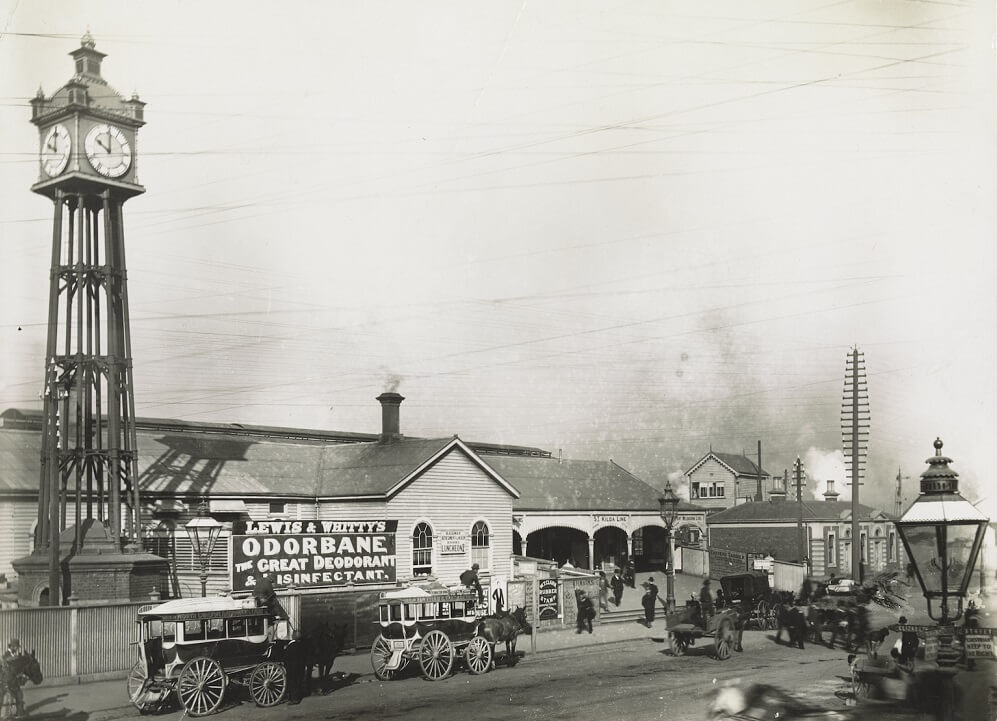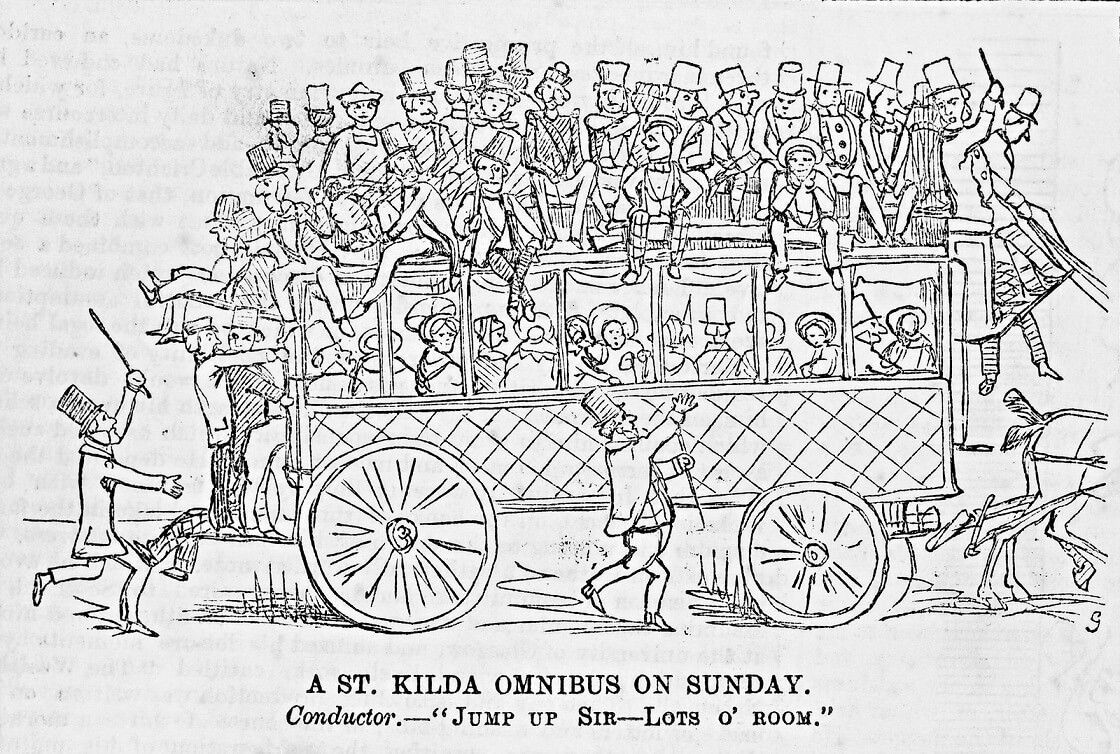Nowhere do omnibuses drive a more thriving trade than in Melbourne, and they deserve it, for they are fast, clean, roomy and well managed.
R.E.N. Twopeny, Town Life in Australia, 1883
Hotel owner, T. M. Crosbie, operated one of the first horse-bus services in 1844. His ‘omnibus’ left Brighton Hotel in the morning, returning from town at four o'clock in the afternoon. Other publicans followed and by 1860 Melbourne had 28 horse bus lines departing from Bourke Street to various suburbs.
Hawthorn Horse Bus, or ‘omnibus’, outside the Governor Hotham Hotel, Burwood Road, Hawthorn, by Henry Gritten, artist, 1856
Reproduced courtesy State Library Victoria
In 1869 Francis Broadman Clapp, Henry Hoyt and William McCulloch established Melbourne's first ‘organised’ horse bus service with scheduled departure times. (Earlier operators operated on demand.) Their launch was announced in the paper:
Melbourne presented a lively scene on Wednesday. Public curiosity had been aroused by the announcement that the new omnibus company would commence operations by running vehicles at intervals between Collingwood and the Spencer-street Railway Station. Large crowds congregated in Bourke-street to witness their arrival and departure, and so much eagerness was displayed to travel by them that there was a scramble to secure seats, and the vehicles were inconveniently crowded…
The cheapness of the fare is one attraction, but the comfort and convenience of the ‘busses, and the punctuality and expedition observed, are also advantages of which the public will not be slow to avail themselves.
It was amusing to observe the manner in which Bourke-street on Wednesday was lined to a considerable distance on either side, with eager spectators of the performance of the new vehicles. Most faces wore a decided smile of satisfaction; but the features and expression of the ‘cabbies’ were long drawn, sullen, defiant, and occasionally fierce.
At first the buses carried conductors, but in 1871, they were dismissed as too costly. Historian, Douglas P. Keep, describes the unusual manner in which drivers collected the fares:
The passenger once inside would go to the end of the bus and place the money in a little glass box fixed high so that the driver sitting on his seat outside could peer through and see the amount was correct. He would then pull a lever and the money would disappear from sight leaving the glass box empty for the next contribution. The driver also had control of the rear door for a large leather strap was attached to the top of the door and lead through the 'bus to a large wooden pedal, so designed that when the driver trod on the pedal the rear door would close. So the driver had many tasks in addition to driving his pair of horses through the traffic.
Passengers were not happy. They complained of larrikinism and bad behaviour on board. Drivers also complained - they were expected to work alternate ‘long’ and ‘short’ days of 14 hours and 9 hours respectively. On Sundays, they had to wash down and clean the vehicles.
'Life of a Melbourne omnibus driver’, by Julian Rossi Ashton, artist, printed by Alfred Martin Ebsworth, 1882
Reproduced courtesy State Library Victoria
Despite complaints the Melbourne Omnibus Company flourished - its regular timetables and cheap fares an immediate success. The company started with a fleet of 11 omnibuses and 90 horses: by 1881 they were operating 158 omnibuses and 1,700 horses, with 470 men on the payroll. Services went as far afield as Moonee Ponds, Prahran and Brunswick, with millions of passengers traveling annually. By the 1880s eleven stables had been established across Melbourne. These stables employed grooms, stablehands, farriers and saddlers. The company also had a repair and coachbuilding shop situated in Brunswick Street, Fitzroy.
Omnibuses continued to operate in Melbourne until the early-twentieth century. Their slow pace, the rising cost of horse feed and competition from cable and electric trams all played a part in their demise.
Omnibuses outside the Elizabeth Street entrance to Flinders Street railway station in the 1880s.
Reproduced courtesy State Library Victoria
'A St. Kilda omnibus on Sunday’, by Frederick Grosse, engraver, printed and published by Edgar Ray and Frederick Sinnett, 1855
Reproduced courtesy State Library Victoria
Omnibuses continued to operate in Melbourne until the early-twentieth century. Their slow pace, the increasing cost of horse feed and competition from cable and electric trams all played a part in their demise.




